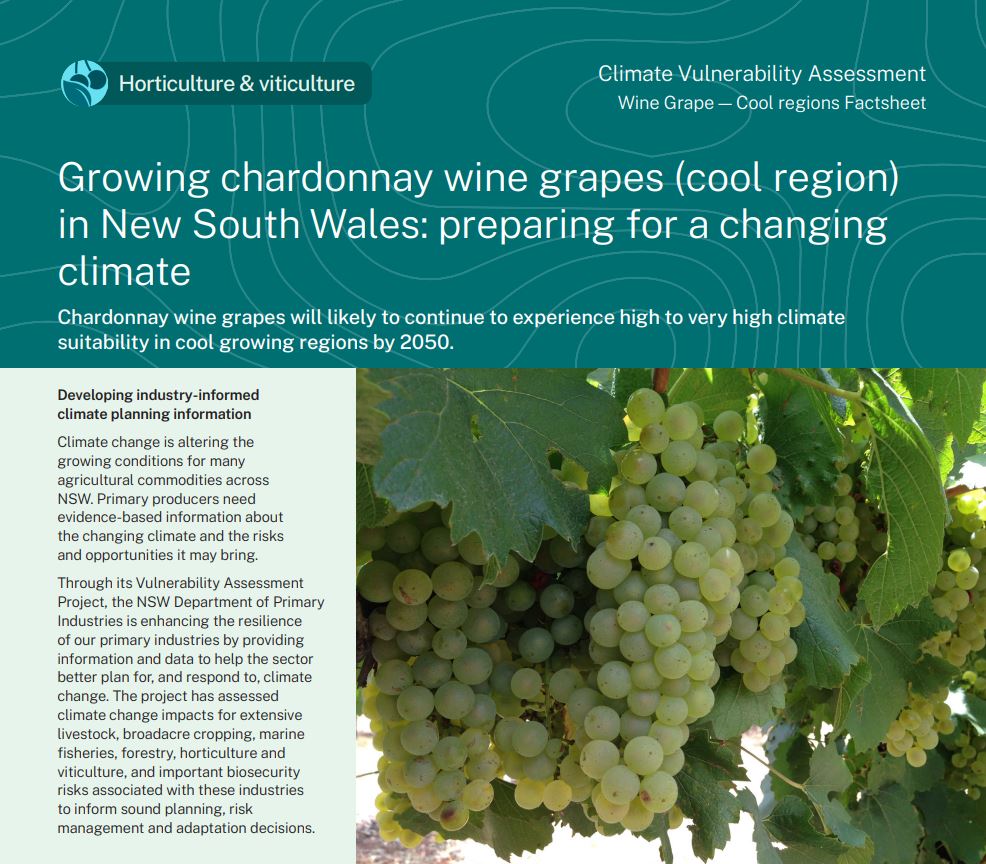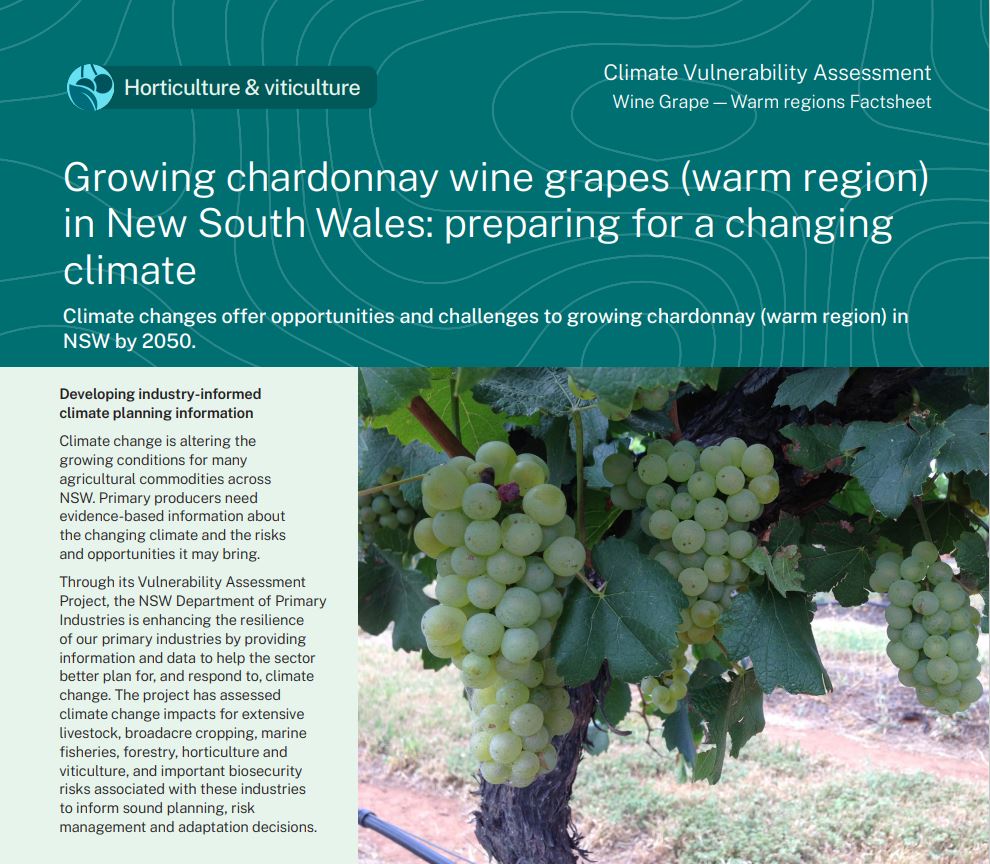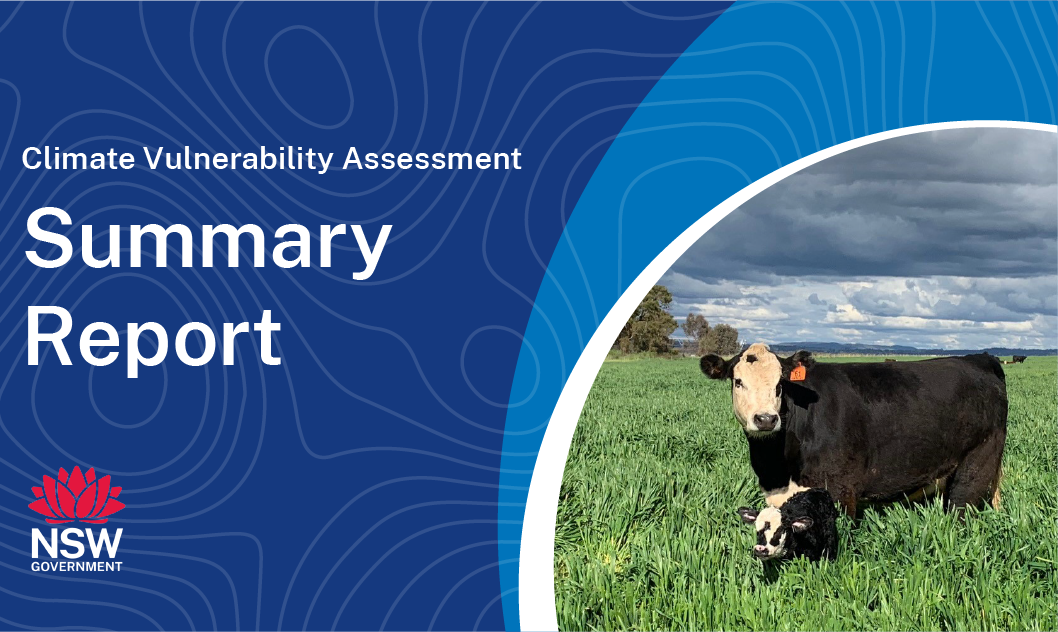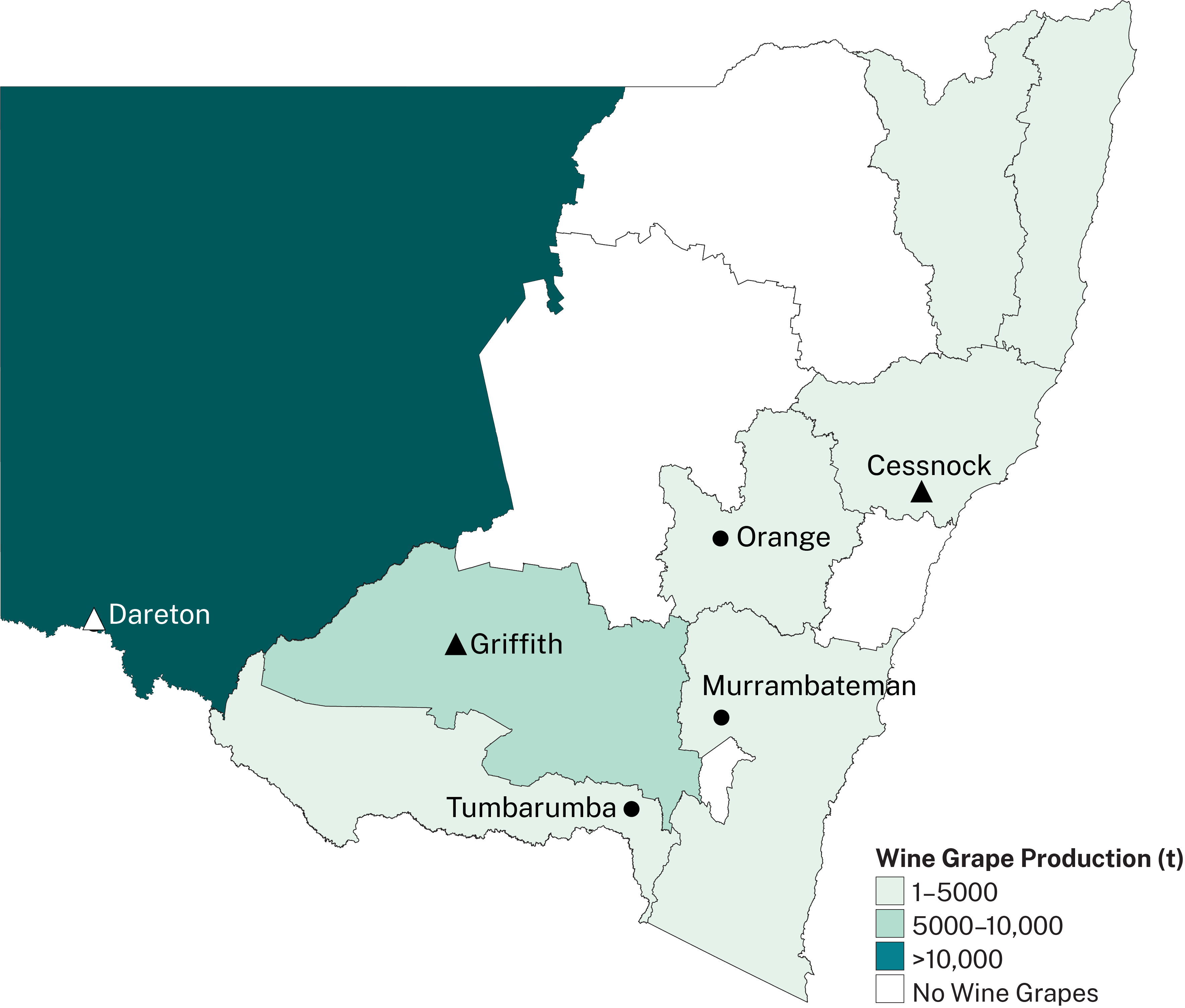What is the NSW DPIRD Climate Vulnerability Assessment? ⏷
Climate change is altering the growing conditions for many agricultural commodities across NSW. Primary producers need evidence-based information about the changing climate, and the risks and opportunities it may bring.
The NSW DPIRD Climate Vulnerability Assessments are enhancing the resilience of our primary industries by providing information and data to help the sector better plan for, and respond to, climate change. They have assessed climate change impacts for extensive livestock, broadacre and irrigated cropping, marine fisheries, forestry, horticulture and viticulture, and important biosecurity risks associated with these industries to inform sound planning, risk management and adaptation decisions.
How we assessed climate suitability ⏷
Climate projections were sourced from Climate Change in Australia’s ‘Application Ready Data’. This dataset is comprised of projections from an ensemble of 8 global climate models, each presenting a plausible future climate. The models differ in their projections, giving rise to uncertainty which is reflected in the confidence statements given in brackets. Care should be taken when interpreting these results.
The Climate Vulnerability Assessment is intended to highlight potential industry- or regional-level changes. Intermediate and high emissions scenarios were used in the assessments (RCP4.5 and RCP8.5), but these are not the only future scenarios possible. The inclusion of climate variables important to the commodities production was based on published research, expert knowledge and data quality and availability.
Learn more in the Climate Vulnerability Assessment Project Framework.
Cool regions model
Climate change presents challenges and opportunities for cool Chardonnay regions in NSW, with increases and decreases in climate suitability expected by 2050 under both emissions scenarios.
Climate impacts: what to expect
Cool winegrowing vulnerabilities
- Irrigation water requirements are likely to increase for cool winegrowing regions (low to moderate confidence). The increase is likely to be greatest under the high emissions scenario.
- There is likely to be a minimal increase in the number of days with temperatures over 38°C, which may become a vulnerability during the bloom and veraison phenophases (moderate to high confidence). However, cool winegrowing regions are likely to remain very highly suitable (moderate to high confidence).
- Cool winegrowing regions may experience a minimal decrease in suitability due to reduced cumulative rainfall during dormancy, particularly in the Orange region (moderate confidence).
Cool winegrowing opportunities
- Cool winegrowing regions will experience fewer days with temperatures below –2°C during budbreak, which could moderately increase suitability around Orange and Tumbarumba (high confidence).
- The number of days with temperatures below 0°C will decrease in budbreak andbloom which is likely to minimally increase suitability at Orange and Tumbarumba (moderate to high confidence).
- Suitability during the bloom, veraison, harvest and post-harvest phenophases will remain similar to historical suitability (moderate to high confidence).
- There is predicted to be a minimal climate impact on sugar and acid quality for cool regions (high confidence).
Warm regions model
Climate change presents challenges and opportunities for warm Chardonnay regions in NSW, with increases and decreases in climate suitability expected by 2050 under both emissions scenarios.
Climate impacts: what to expect
Warm winegrowing vulnerabilities
- Irrigation water requirements are likely to increase for warm winegrowing regions in the future (low to moderate confidence). The increase is likely to be greatest under the high emissions scenario.
- There is likely to be an increase in the number of days with temperatures over 38°C, which may become a vulnerability during the bloom and veraison phenophases (moderate to high confidence). This is likely to moderately decrease suitability at Griffith and Dareton (moderate to high confidence).
- An increase in the number of days with temperatures over 45°C during veraison could cause a minimal decrease in suitability on the Dareton region (moderate to high confidence).
- A decrease in cumulative rainfall during dormancy is likely to have a minimal negative impact on Dareton and Griffith (high confidence).
Warm winegrowing opportunities
- Warm regions should experience fewer occurrences of temperatures below 0°C during budbreak, which could minimally increase the Griffith region suitability (high confidence).
- The bloom, harvest and post-harvest phenophases will remain very highly suitable in all growing regions (moderate to high confidence).
- There is predicted to be a minimal climate impact on sugar and acid quality for warm regions (high confidence).
Adapting to the changing climate
Adapting to extreme heat
- Increased hot days are expected to affect veraison. The application of sunscreen products to reduce sunburn damage and anti-transpirants to maintain berry integrity and reduce water loss could alleviate some of the impacts. Installation of over-row netting could also potentially be used to limit sun exposure under high temperatures. Changing fertiliser and irrigation practices may also help adapt to extreme heat.
Adapting to increased irrigation water requirements
- The wine industry may need to improve water efficiency through changing irrigation practices, upgrading water infrastructure or adopting new technologies.
Where can I find the climate suitability maps?
Maps of historical and future climate suitability for horticultural commodities were produced to demonstrate where in the state a commodity is likely to thrive or else be limited by future climatic conditions. The maps are not provided on these webpages but can be found in the Climate Vulnerability Assessment Summary Report (PDF, 41425.92 KB).
Chardonnay cool regions Factsheet
(PDF, 3554.27 KB)

Chardonnay warm regions Factsheet
(PDF, 3553.53 KB)

Summary Report
(PDF, 41425.92 KB)

 Wine in NSW
Wine in NSW